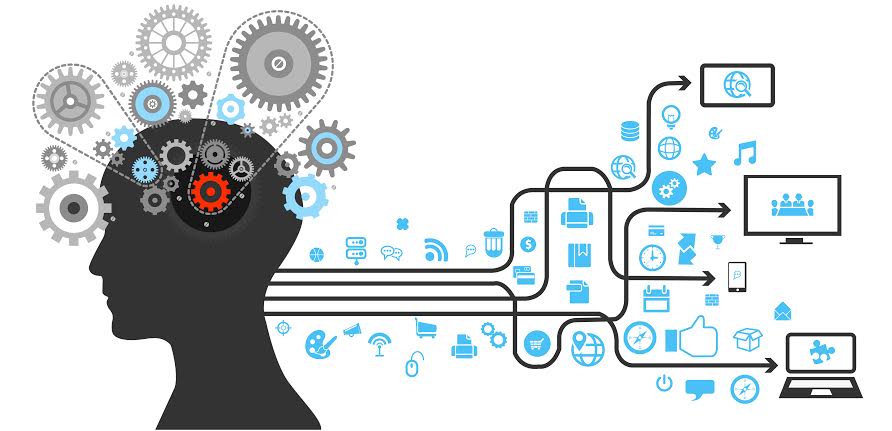Accenture has released Accenture Banking Technology Vision for 2017, an annual report that draws on the analysis of an advisory board of more than two dozen individuals, interviews with technology luminaries and industry experts, and results of a survey of more than 600 bankers.

In the next stage of artificial intelligence adoption, banks will use AI to help understand the intentions and emotions of customers and enable better interactions, according to the report from Accenture.
According to the report, more than three-quarters [78 percent] of bankers globally and 87 percent in India believe that AI will enable simpler user interfaces that will help banks create a more human-like customer experience. In addition, four out of five global respondents [79 percent] and almost nine out of ten [87 percent] of bankers in India believe that AI will revolutionize the way banks gather information and interact with customers, and three-quarters [76 percent globally] and 83 percent in India believe that within three years, banks will deploy AI as their primary method for interacting with customers.
According to Piyush Singh, MD and head of Accenture Financial Services group in India
Indian banks are embracing digital solutions for interacting with customers; the next step is implementing the enabling power of artificial intelligence [AI], such as identifying consumer preferences and then reacting with insight and emotional intelligence. In addition to gaining insights, banks could transform customer experience and improve operational efficiency. However, the challenge will be how quickly banks can implement these new technologies as banks continue to face legacy issues with their existing IT set up. This would require a C-suite-led impetus to embrace new technologies.
The theme of this year’s report, Technology for People, is a call to action for bank executives to design technology to help align their products and services with what consumers want in near real-time. In traditional banks, basic transactions continue to migrate from physical to digital channels, leading to major changes as banks redesign their branch networks and enhance their digital footprint. Four out of five bankers surveyed [80 percent] globally as well as India expect AI to accelerate technology adoption throughout the organization, providing their employees with the tools and resources to better serve consumers.
As with previous Technology Vision reports, Technology Vision 2017 is structured around key trends informed by the research.
The five trends identified in Technology Vision 2017 are
- AI Is the New UI [Experience Above All]
- Ecosystem Power Plays [Beyond Platforms]
- Workforce Marketplace [Invent Your Future]
- Design for Humans [Inspire New Behaviors]
- The Unchartered [Invent New Industries, Set New Standards]
The Design for Humans Trend indicates that the key to increasing the quality of customer experience lies in the ability to adapt for unique customer behaviors. The report finds that while human contact is diminishing in terms of volume, the quality and importance of human touch points will increase. For instance, one-third [34 percent] of the bankers surveyed globally and almost similar number in India [33 percent] said they plan to use a detailed understanding of human behavior to guide new customer experiences. And while nearly nine in 10 bankers [89 percent] said they believe that their customers are satisfied with their bank’s use of personalization, two-thirds [67 percent] globally and in India claim they struggle to understand their customers’ needs and goals.
As reported in the Ecosystem Power Plays trend, banks are increasingly integrating their core functions with digital ecosystem platforms in an effort to manage more broad-based consumer relationships. Nearly all bankers surveyed [98 percent] said they believe that it is ‘somewhat’ or ‘very’ critical to adopt a platform-based business model and engage in ecosystems with digital partners, with one-quarter [25 percent] of global respondents and 40 percent of India respondents saying their organizations are already taking aggressive steps to participate in ecosystems.
Many banks are already giving authorized third-parties access to account data and aggregated card profiles to benefit customers. Banks recognize that it is critical to participate in these ecosystems, but it comes at a cost. Three-quarters [76 percent] of respondents globally and four out of five [80 percent] in India said that participating in these ecosystems would require giving up control in favor of an overall better outcome- such as speed, agility and access to new customers- and that same number believe that chosen partners and ecosystems will help determine their bank’s competitive advantage moving forward.
Methodology
Accenture’s Technology Vision is developed annually by the Accenture Labs. For the 2017 report, the research process included gathering input from the Technology Vision External Advisory Board, a group comprising more than two dozen experienced individuals from the public and private sectors, academia, venture capital firms and entrepreneurial companies. In addition, the Technology Vision team conducted interviews with technology luminaries and industry experts, as well as with nearly 100 Accenture business leaders.
In parallel, Accenture Research conducted a global online survey of more than 5,400 business and IT executives across 31 countries and 16 industries to capture insights into the adoption of emerging technologies. The banking industry report is based on responses from 579 respondents at banks in 31 countries across North America, Europe, Asia-Pacific, Africa and South America. The goal of the survey was to identify the key issues and priorities for technology adoption and investment. Respondents were mostly C-level executives and directors, with some functional and line-of-business leads, at companies with annual revenues of at least USD 500 million, with the majority of companies having annual revenues greater than USD 6 billion.

